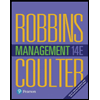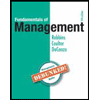Question Audi cars are produced via a variety of approaches in China, India and Indonesia. Discuss each approach used in each country. Production in China, Audi’s Most Important Market
Critical Path Method
The critical path is the longest succession of tasks that has to be successfully completed to conclude a project entirely. The tasks involved in the sequence are called critical activities, as any task getting delayed will result in the whole project getting delayed. To determine the time duration of a project, the critical path has to be identified. The critical path method or CPM is used by project managers to evaluate the least amount of time required to finish each task with the least amount of delay.
Cost Analysis
The entire idea of cost of production or definition of production cost is applied corresponding or we can say that it is related to investment or money cost. Money cost or investment refers to any money expenditure which the firm or supplier or producer undertakes in purchasing or hiring factor of production or factor services.
Inventory Management
Inventory management is the process or system of handling all the goods that an organization owns. In simpler terms, inventory management deals with how a company orders, stores, and uses its goods.
Project Management
Project Management is all about management and optimum utilization of the resources in the best possible manner to develop the software as per the requirement of the client. Here the Project refers to the development of software to meet the end objective of the client by providing the required product or service within a specified Period of time and ensuring high quality. This can be done by managing all the available resources. In short, it can be defined as an application of knowledge, skills, tools, and techniques to meet the objective of the Project. It is the duty of a Project Manager to achieve the objective of the Project as per the specifications given by the client.
Question
Audi cars are produced via a variety of approaches in China, India and Indonesia.
Discuss each approach used in each country.
Production in China, Audi’s Most Important Market
China is Audi’s most important market, with sales of 492,000 vehicles in 2013. This is way ahead of BMW and more than twice as many cars as Mercedes sold in this country. Audi’s long relationship with the market and local production spanning more than two decades have certainly played a role in this success.
Production in a Joint Venture
Audi produces in a production site in Changchun, a complete production facility owned by FAW-Volkswagen Automotive Company. This joint venture was created between First Automotive Works (FAW), a state-owned Chinese company and one of China’s largest automotive companies, and Volkswagen in 1991. In 1995, Audi became the third joint venture partner, with an equity holding of 10%. At that time, it was not possible for a foreign company to wholly-own a production plant in China. Currently, the plant in Changchun produces the Audi A4L and Audi A6L, in particular the long-wheelbase versions, which are very popular in the Chinese market. In fact, the Audi A6L is Audi’s bestselling car in China; the Audi A4L is the second highest selling model. The Audi Q3 and Audi Q5 SUVs are produced mainly for the local market for a total output of 420,000 cars in 2013.
Establishment of a Second Production Site
Given that the compact market in China is fast-growing, it is also important to produce cars in this segment in the country. In 2013, the FAW-Volkswagen- Audi joint venture established a second production plant, also a complete production facility, in Foshan in Southern China. The Audi A3 sedan and the A3 sportback are produced at this site, and production in the first year is expected to reach 150,000-200,000 cars.
Local production in China has a number of advantages. Among other things, it helps Audi to avoid the 25% import tax in China (Team 2014).
Production in India and Indonesia
In India, Audi has had a small-scale production in a contract manufacturing agreement with Skoda, another Volkswagen division, since 2007. Škoda Auto India Private Ltd. assembles about 9,000 Audis for the Indian market, of different models (A4 sedan, A6 sedan, Q3, Q5, and Q7).
Assembling in India
In fact, the value-added in India is very low; the cars are assembled from parts produced in Europe. For example, the Audi A6 is assembled from ca. 2,500 parts that are shipped in containers from Hamburg and Bremerhaven in Germany. Car bodies are already painted, the engines completed and many components (like the front seats) are preassembled. From these parts and components, the workers in India assemble the final cars.
Indonesia has a very strong growth rate, and with 240 million inhabitants and a growing middle class it is likely to soon become the largest car market of South-East Asia. However, import tariffs are very high, at 40% for vehicles. This makes local production or at least assembly favourable. The tariff duties in Indonesia for CKD kits (completely-knocked-down kits of cars that are then assembled) are substantially lower, approx. 10% (DB Research 2011, p. 9).
SKD Assembly in Indonesia
Audi has some of its models for the Indonesian market assembled in the country. In 2011, it began a cooperation with PT National Assembler, a local vehicle assembly company (and a subsidiary of Indomobil), which also assembled some Volkswagen models. This partner assembles the A4 and A6 models for the Indonesian market in an SKD (semi-knocked-down) process. In this process, the cars are first completely produced and assembled at other Audi plants (mainly in Germany). They are then disassembled again and packaged as assembly kits which are shipped to Indonesia. PT National Assembler completes the car and employees specially trained by Audi carry out the final quality inspection. The capacity and long-term plan is for sever- al thousand cars per year (the original target was set at 2,700 cars by 2015) but the current development is very weak. In 2013, only 186 Audis were produced in Indonesia, following a weak demand due to devaluation of the local currency.
Summary and Outlook
With different partners and different production countries, it is a challenge to guarantee a uniformly high quality. Audi follows a standard production system everywhere, which is intended to ensure that “made by Audi” entails the same quality no matter where the product comes from.
Trending now
This is a popular solution!
Step by step
Solved in 4 steps









